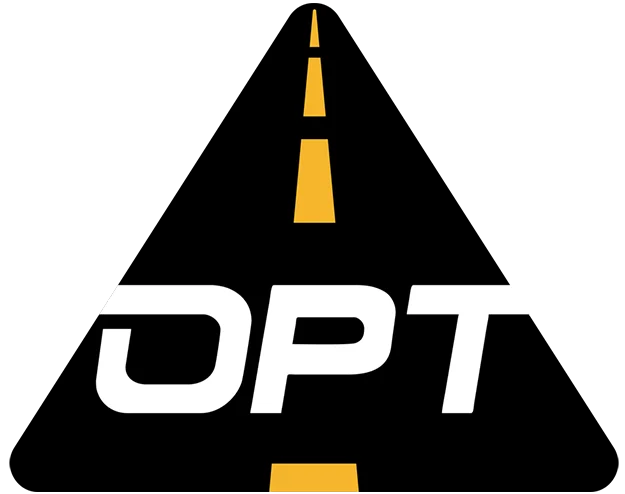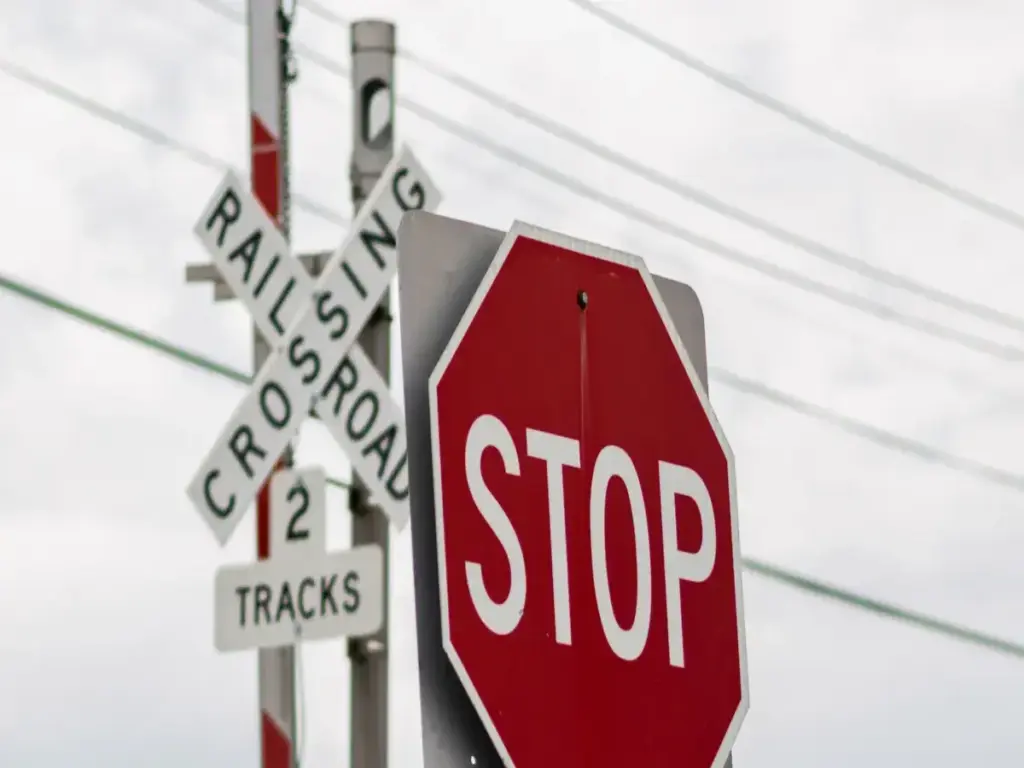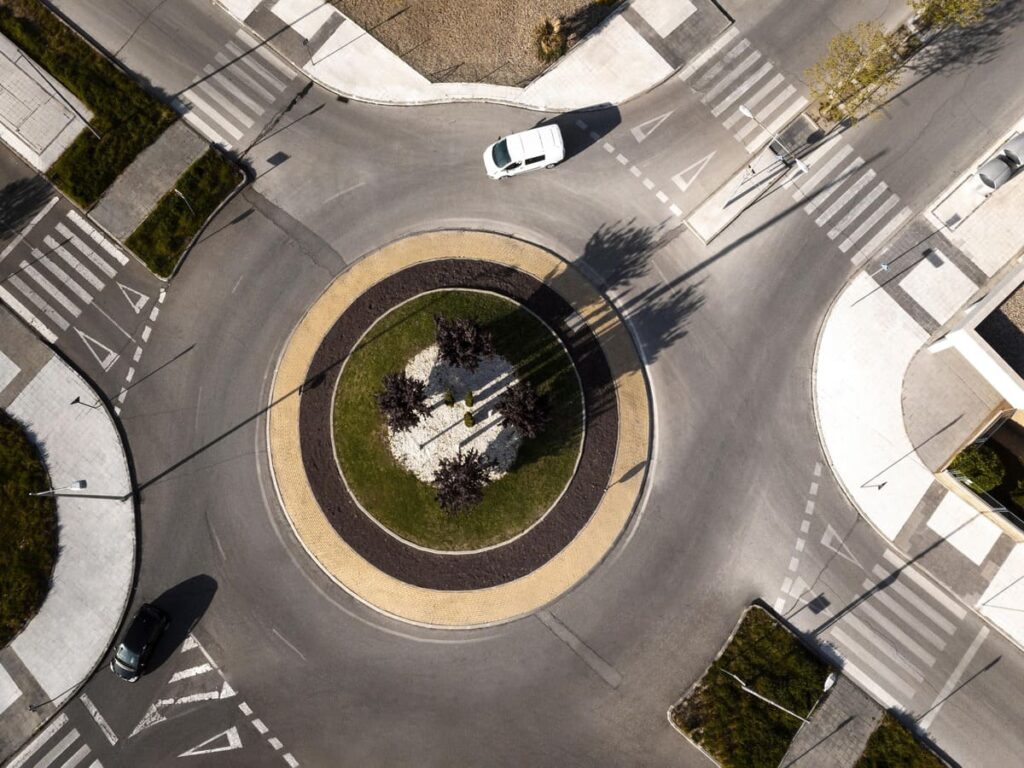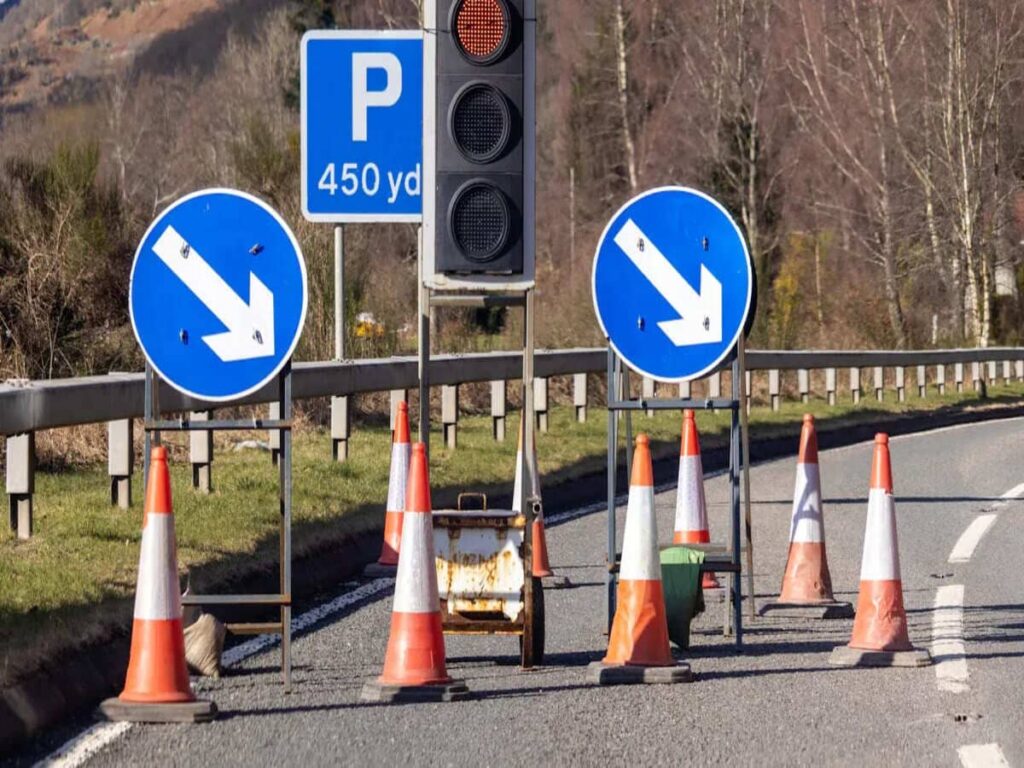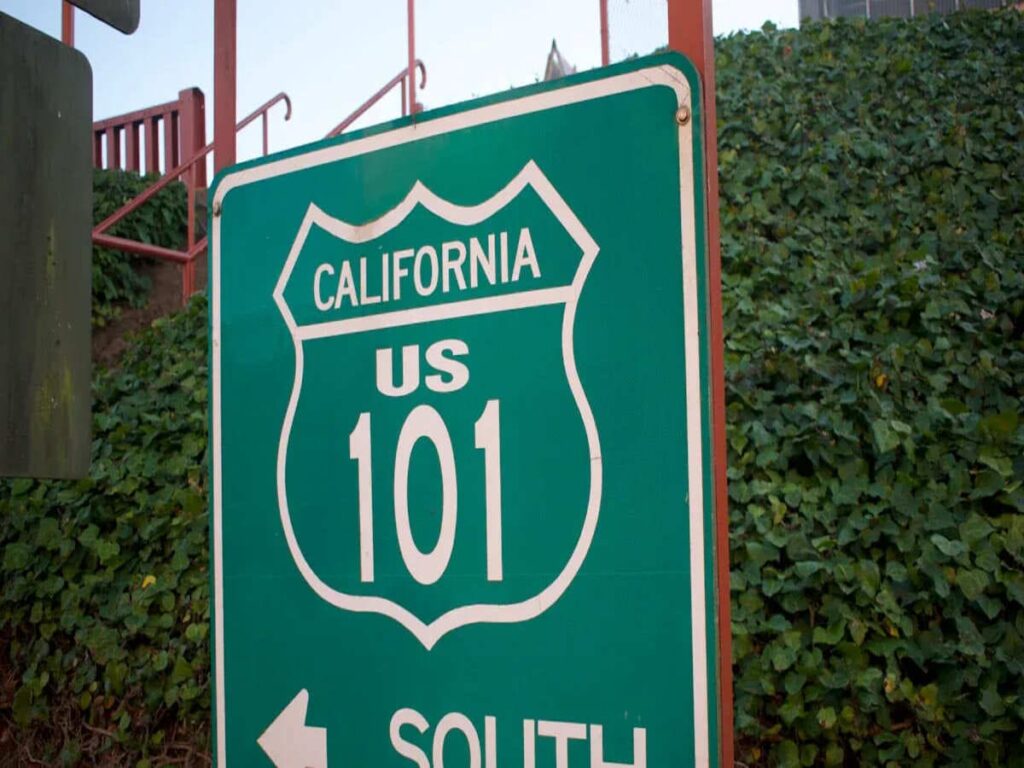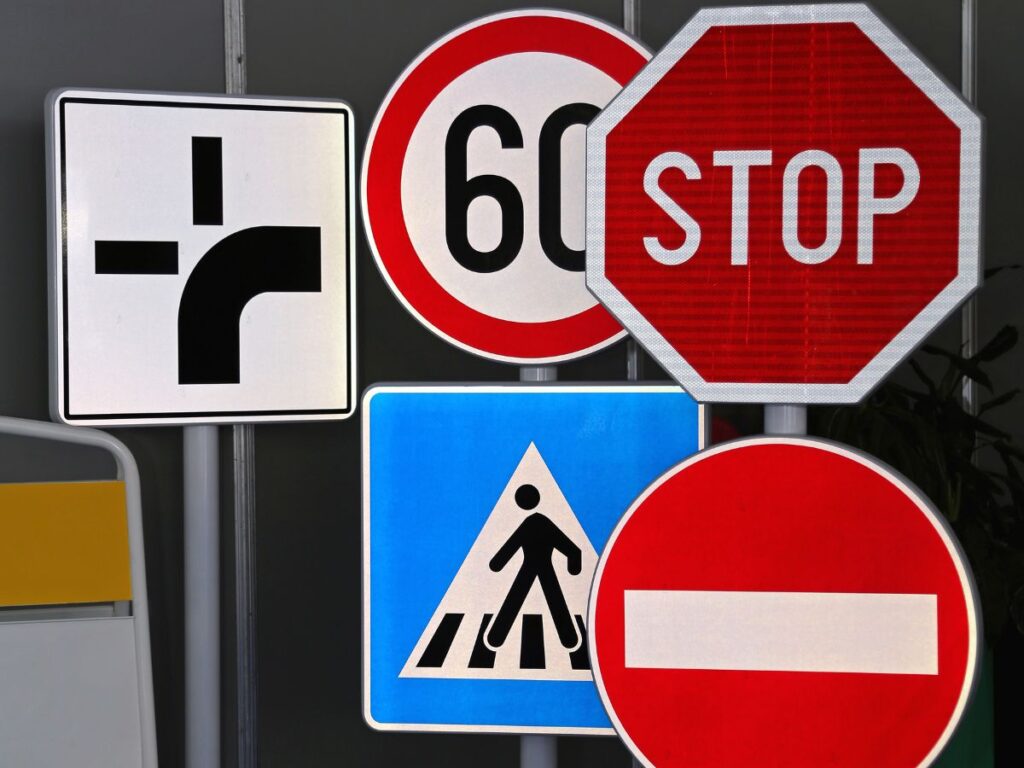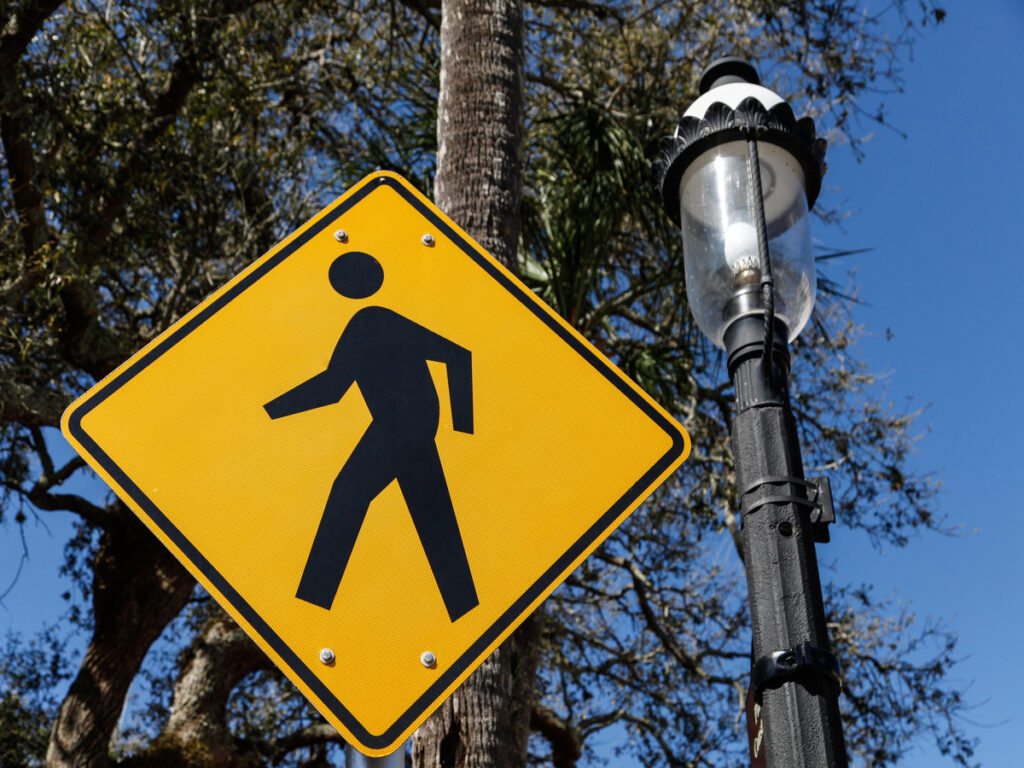
I segnali stradali sono importanti per aiutare i conducenti e proteggere le strade. Lo standard dimensioni dei segnali stradali garantisce che tutti possano vederli e leggerli in modo efficace. Per esempio, I segnali stradali dovrebbero essere leggibili da 30 Piedi per ogni centimetro di altezza della lettera. Di notte, una luminosità almeno 35 cd/m² aiuta le persone a vedere meglio, Soprattutto in campagna. Queste regole mantengono l'uniformità nelle dimensioni dei segnali stradali ovunque, rendendoli facili da capire e abbassare i rischi per incidenti. Che tu sia in una città o in campagna, La dimensione dei segnali stradali giusti è la chiave per una comunicazione chiara e la gestione del traffico.
OPTRAFFIC fornisce segnaletica stradale di alta qualità che soddisfano tutti i requisiti standard di dimensione e visibilità. I prodotti per la sicurezza del traffico optraffic garantiscono sicurezza e conformità per le strade in qualsiasi ambiente, urbano o rurale.
Contattaci oggi per esplorare la nostra gamma completa di soluzioni di sicurezza stradale.
Takeaway chiave
- I segnali stradali hanno dimensioni standard per proteggere i conducenti.
- Segni più grandi sono più semplici da leggere da lontano.
- I segni delle dimensioni di destra impediscono la confusione e rendono il traffico più fluido.
- I segni riflettenti sono più facili da vedere di notte o sotto la pioggia.
- L'uso delle dimensioni dei segni MUTCD evita problemi e mantiene le strade più sicure.
Dimensioni di carico stradale standard: Quello che dovresti sapere
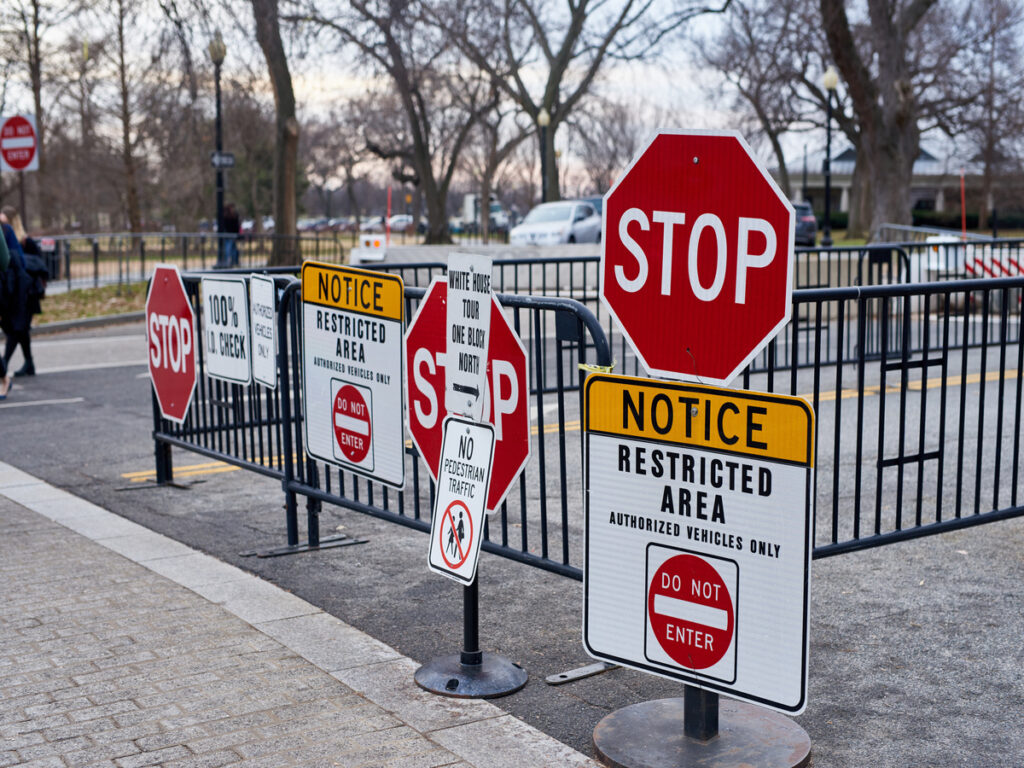
Dimensioni comuni per i segnali stradali
La segnaletica stradale è essenziale per mantenere il flusso del traffico regolare e la sicurezza stradale. La dimensione di ciascun segnale stradale è scelta attentamente per garantire che sia chiaramente visibile e leggibile dai conducenti. Comprensione dimensione del segnale stradale è fondamentale per garantire che i segnali trasmettano efficacemente il loro messaggio, se guidare gli automobilisti verso la loro destinazione, avvertimento dei pericoli, o far rispettare le leggi sul traffico. Diversi tipi di i segnali stradali svolgono diverse funzioni, e le loro dimensioni variano a seconda del loro scopo, posizione, e condizioni di traffico. Sotto, esploriamo le dimensioni dei vari segnali stradali comuni e perché sono importanti per una guida sicura.
1. Dimensioni del segnale di stop: 30″ X 30″ per la massima visibilità e sicurezza
UN Segno di stop è uno dei segnali di controllo del traffico più cruciali sulla strada. Viene utilizzato per garantire che i conducenti si fermino completamente prima di procedere, che aiuta a prevenire incidenti, in particolare agli incroci. IL dimensione standard per i segnali di stop È 30 pollici di 30 pollici, come raccomandato dal Manuale sui dispositivi di controllo del traffico uniforme (MUTCD). Questa dimensione è efficace per fornire la massima visibilità e consentire ai conducenti di reagire in tempo.
Nelle aree poco trafficate o nei parcheggi, uno più piccolo 24 pollici di 24 pollici viene spesso utilizzato il segnale di stop. Questa dimensione è ancora efficace in questi ambienti in cui le velocità sono inferiori. Nelle zone ad alto traffico o negli incroci ad alto rischio, più grande 36 pollici di 36 pollici i segnali di stop vengono spesso utilizzati per migliorare la visibilità da distanze maggiori, garantendo ai conducenti più tempo per reagire.
2. Dimensioni del cartello con il nome della strada: Garantire la leggibilità con 6″ Altezza della lettera
Segni dei nomi delle strade sono vitali per aiutare i conducenti a navigare sulle strade, soprattutto nelle aree urbane o nei quartieri sconosciuti. Per garantire la leggibilità, il MUTCD raccomanda che l'altezza delle lettere dei segnali stradali sia almeno pari a 6 pollici. La larghezza del segnale generalmente non deve superare 6 pollici.
Nelle città con traffico ad alta velocità o scarsa visibilità, potrebbero essere necessari segnali stradali più grandi per migliorare la leggibilità. Per zone residenziali o strade poco trafficate, È possibile utilizzare segnali stradali più piccoli, ma devono comunque soddisfare l'altezza minima delle lettere per garantire la leggibilità. Testo aggiuntivo, come il tipo di strada (PER ESEMPIO., Viale, Strada), potrebbe essere più piccolo, ma non dovrebbe essere inferiore a 3 pollici alto.
3. Dimensione del segno di rendimento: Segni a forma di triangolo con dimensioni variabili
UN segno di resa è un altro segnale stradale importante, tipicamente a forma di triangolo. I segnali di precedenza indicano che i conducenti devono dare la precedenza ad altri veicoli o pedoni. Mentre la dimensione di a segno di resa può variare, generalmente varia da 24 pollici di 24 pollici nelle zone a bassa velocità a 36 pollici di 36 pollici in zone ad alto traffico o sulle autostrade.
In luoghi molto trafficati o più pericolosi, come gli incroci trafficati, I segnali di precedenza più grandi garantiscono che i conducenti possano notare il segnale in tempo per regolare la velocità o la precedenza in modo appropriato.
4. Dimensioni del segnale di limite di velocità: 24″ X 30″ per una comunicazione chiara
Segni di limite di velocità sono essenziali per controllare la velocità del veicolo, garantire che i conducenti mantengano velocità sicure in diversi ambienti. La dimensione standard per la maggior parte Segni di limite di velocità È 24 pollici di 30 pollici, che è abbastanza grande da essere visto chiaramente dai conducenti sulle strade urbane.
Su autostrade o strade rurali dove i veicoli viaggiano a velocità più elevate, la dimensione del segnale del limite di velocità può aumentare per garantirne la visibilità a distanza. Questi segnali più grandi sono particolarmente importanti nelle aree con lunghi rettilinei o strade larghe dove i conducenti potrebbero non vedere immediatamente i segnali più piccoli.
5. Dimensioni del segnale di avvertimento: 24″ X 24″ a 36″ x 36″ per i rischi
Segnali di avvertimento vengono utilizzati per avvisare i conducenti dei potenziali pericoli futuri, come le curve taglienti, Attraversamenti pedonali, o condizioni scivolose. Questi segni sono in genere a forma di diamante e può variare di dimensioni. Segnali di avvertimento comunemente vanno da 24 pollici di 24 pollici A 36 pollici di 36 pollici, a seconda della gravità del pericolo.
Ad esempio, su strade tortuose o in prossimità di curve strette, UN 36-pollici per 36 pollici il segnale di avvertimento viene spesso utilizzato per garantire che sia visibile a distanza. Nelle zone con rischi meno gravi, più piccolo 24-pollici per 24 pollici possono essere utilizzati segnali di avvertimento.
6. Dimensioni del segno guida: 36″ x48″ per indicazioni e uscite
Segni guida, come segnali di uscita o segnali direzionali, aiutare gli automobilisti a navigare su strade sconosciute. Questi segnali devono essere abbastanza grandi da essere visti chiaramente, soprattutto su autostrade o incroci trafficati. La dimensione standard per segnali guida in genere varia da 36 pollici di 48 pollici o più grande, a seconda della complessità delle informazioni sulla direzione o sull'uscita.
Per esempio, I segnali di uscita dell'autostrada che forniscono informazioni direzionali critiche sono generalmente più grandi in modo che i conducenti possano leggerli in tempo per prendere decisioni sicure sui cambi di corsia o sulle uscite.
7. Dimensioni del segnale della zona di costruzione: Ampio e visibile per la sicurezza
In zone di costruzione, i segnali stradali temporanei vengono utilizzati per avvisare i conducenti dei cambiamenti nel flusso del traffico, limiti di velocità ridotti, o chiusure di corsie. Questi segni sono in genere 36 pollici di 36 pollici o più grandi per garantire un'elevata visibilità in queste aree spesso pericolose. Le dimensioni più grandi aiutano a garantire che i conducenti notino tempestivamente i segnali, che è vitale per mantenere la sicurezza nelle zone di costruzione.
Ecco una guida di riferimento rapido per aiutarti a comprendere le dimensioni consigliate dei segnali stradali per vari tipi di segnaletica:
| Tipo di segno | Dimensione suggerita |
|---|---|
| Segno di stop | 30″ X 30″ (standard), 24″ X 24″ (minimo), 36″ x 36″ (aree ad alto rischio) |
| Segno del nome della strada | Larghezza: 6″ o meno; Altezza: 6″ (minimo) |
| Segno di snervamento | Forma triangolo; La dimensione varia da 24″ X 24″ a 36″ x 36″ |
| Segno di limite di velocità | 24″ X 30″ (standard), più grande per le autostrade |
| Segnali di avvertimento | 24″ X 24″, 36″ x 36″ (a seconda del pericolo) |
| Segni guida | 36″ x48″ o più grande, a seconda delle condizioni della strada |
| Segni di costruzione | Tipicamente 36″ x 36″ o più grande per un'alta visibilità |
Perché le dimensioni contano per vedere e leggere i segni
IL dimensione di un segno influenza il modo in cui le persone possono vederlo. Segni più grandi sono più facili da leggere da lontano, Soprattutto per i conducenti veloci. Un segnale di stop da 30 pollici è abbastanza grande da notare prima di raggiungere un incrocio. Segni più piccoli, usato nelle città, sono fatti per distanze più strette ma rimani in chiaro.
Avere le stesse dimensioni dei segni ovunque aiuta anche i driver. Che tu sia in una città o in una strada di campagna, Le dimensioni corrispondenti rendono i segni facili da individuare e capire. Questo riduce gli errori e mantiene tutti più sicuri.
Scegliere la migliore dimensione del segno per strade diverse
Quando si tratta di dimensioni dei segnali stradali, una taglia non va bene per tutti. La dimensione appropriata per ciascun segnale dipende fortemente dal tipo di strada, condizioni del traffico, e la velocità alla quale viaggiano i veicoli. Il manuale sui dispositivi di controllo del traffico uniforme (MUTCD) fornisce linee guida che aiutano a garantire che i segnali siano visibili e leggibili, non importa dove siano posizionati.
Dimensioni dei segnali stradali per diversi ambienti: Città, Sobborgo, e autostrada
Segni della città: Più piccolo per distanze più brevi
In ambienti cittadini, il traffico in genere si muove più lentamente, e gli autisti sono più vicini ai segnali. Di conseguenza, segnali della città può essere più piccolo ma devono comunque essere chiari e facili da leggere. Per esempio, Segni di nome della strada nelle città sono spesso sottile e compatto, con l'altezza del cartello che varia a seconda della lunghezza del nome della via. L'idea è di mantenere i segnali visibili e leggibili distanze di visione più brevi senza sovraccaricare lo spazio visivo in ambienti urbani affollati.
Esempio: Il cartello con il nome di una strada in una città densamente popolata potrebbe avere un'altezza di 6 pollici per il testo e una larghezza che rientri nello standard 6-pollice allineare, assicurandosi che sia visibile da una distanza ragionevole, anche con auto parcheggiate o altri ostacoli visivi.
Segni suburbani: Più grande per velocità più elevate
In aree suburbane, dove i veicoli tendono a viaggiare più velocemente che nelle città ma non così velocemente come sulle autostrade, i segni devono essere più grandi per garantire che possano essere visti da una distanza maggiore. Segni più grandi Aiuta gli automobilisti a notare informazioni importanti, come i limiti di velocità o i nomi delle strade, prima che siano troppo vicini per reagire. Questi segnali sono generalmente di dimensioni comprese tra quelli dei segnali urbani e autostradali per adattarsi a velocità più elevate e distanze maggiori.
Esempio: Nelle zone suburbane, UN Segno di limite di velocità potrebbe essere 24 pollici di 30 pollici, garantendo che possa essere letto dai conducenti che viaggiano a velocità di 30 A 45 mph.
Segni autostradali: Il più grande per la massima visibilità
Segnali autostradali deve essere il più grande perché i veicoli stanno viaggiando alte velocità. Gli automobilisti devono vedere e comprendere tempestivamente la segnaletica autostradale per prendere decisioni sicure, come rallentare, fusione, o uscire. Per esempio, UN segnale di stop dell'autostrada potrebbe essere 36 pollici di 36 pollici, fornendo ampia visibilità e leggibilità a distanza, fondamentale per la sicurezza stradale. D'altra parte, UN segnale di stop del parcheggio può essere piccolo come 24 pollici di 24 pollici, poiché i veicoli viaggiano a velocità molto più lente in queste aree.
Esempio: UN segnale di uscita dell'autostrada Forse 48 pollici di 72 pollici per garantire che i conducenti possano vedere chiaramente le istruzioni di uscita da una lunga distanza, consentendo loro tutto il tempo per regolare la velocità e la posizione sulla strada.
Fattori che influenzano le dimensioni dei segnali stradali
L'ottimale dimensione del segnale stradale è influenzato da diversi fattori, garantendo che ogni segnale comunichi efficacemente nel suo ambiente specifico. Di seguito sono riportate le considerazioni principali:
| Fattore | Spiegazione |
|---|---|
| Lunghezza del messaggio | I messaggi più lunghi richiedono segni più grandi per mantenere la leggibilità. Sulle autostrade, ad esempio, UN segno guida con più destinazioni di uscita potrebbe essere necessario 48 pollici di 72 pollici per accogliere tutte le informazioni in modo chiaro. |
| Distanza per la lettura | I segnali devono essere sufficientemente grandi da essere leggibili a distanza di sicurezza. Su strade ad alta velocità, come autostrade, segnali di uscita E Segni di limite di velocità deve essere visto da almeno 500 piedi lontano. |
| Condizioni stradali | Fattori come curve, colline, o spazi stretti potrebbe influenzare la dimensione o il posizionamento del segnale. Per esempio, UN segnale di avvertimento di curva stretta potrebbe essere più grande del solito per garantire che sia visibile in aree con scarsa visibilità. |
Esempio reale di regolazione delle dimensioni dei cartelli
Nelle aree con curve affilate, come strade di montagna o autostrade tortuose, Segnali di avvertimento Forse più grande per compensare la visibilità limitata creata dalle curve. Segnali stradali tortuosi O segnali stradali scivolosi Forse 36 pollici di 36 pollici invece della norma 24 pollici di 24 pollici per garantire che i conducenti abbiano tempo sufficiente per reagire.
Allo stesso modo, nelle zone collinari, potrebbe essere necessario posizionare la segnaletica stradale in un punto più alto per essere visibile da una distanza maggiore. Questo adeguamento potrebbe anche richiedere segnali leggermente più grandi per garantire la visibilità sulla cresta di una collina.
L'effetto della dimensione del segno stradale sul tempo di risposta del conducente e sul flusso di traffico
In che modo la dimensione influisce sul tempo di reazione del driver
IL dimensione di un segnale stradale è molto importante. Segni più grandi sono più facili da vedere da lontano. Questo ti dà più tempo per leggere e reagire. Per esempio, Un segnale di stop di dimensioni corrette ti aiuta a notarlo prima. Questo è utile quando si guida velocemente, Quindi puoi rallentare in sicurezza.
Segni più piccoli sono più difficili da notare, Soprattutto nelle aree trafficate. Strade o incroci affollati possono renderle ancora meno visibili. Se non vedi un segno in tempo, Gli incidenti sono più probabili. I segni che sono le dimensioni giuste ti aiutano a reagire rapidamente. Questo mantiene tu e gli altri al sicuro durante la guida.
Impatto di segni di dimensioni adeguate sul flusso del traffico
I segni con le dimensioni giuste mantengono anche il traffico che si muove senza intoppi. Quando puoi leggere un cartello in anticipo, Puoi prepararti per le modifiche in anticipo. Questo aiuta a evitare fermate improvvise o cambi di corsia rapidi, che può causare ingorghi.
Sulle autostrade, Dove le auto vanno velocemente, I grandi segni sono molto importanti. Danno presto indicazioni chiare, Quindi puoi regolare senza confusione. Piccoli segni possono causare problemi, come mosse improvvise che lenta traffico e causano incidenti. L'uso delle dimensioni dei segni corrette aiuta a fluire in modo sicuro e senza ritardi.
Perché dovresti scegliere i segnali stradali di dimensioni giuste per il tuo progetto
Evitare problemi legali e di sicurezza
È importante raccogliere le dimensioni giuste per i segnali stradali. Non si tratta solo di essere visti ma anche seguenti regole. Leggi locali e regole del MUTCD impostare dimensioni specifiche per segnali come i segnali di stop e di precedenza. Per esempio, Un segnale di stop standard è 30 pollici di 30 pollici. Quelli più piccoli potrebbero andare bene nelle aree a bassa velocità. Ignorare queste regole può portare a multe o problemi legali.
I segni di dimensioni corrette aiutano anche a prevenire gli incidenti. Potrebbe essere perso un piccolo segnale di stop, Soprattutto in aree occupate o veloci. Questo può causare incidenti. L'uso delle dimensioni giuste per i segni di arresto e rendimento aiuta i conducenti a notarle in tempo. Questo riduce la possibilità di incidenti. Seguire queste regole non solo evita questioni legali, ma tiene anche al sicuro le persone.
Perché la riflettività e la durata materia
I segni riflettenti e durevoli sono molto importanti, soprattutto di notte. Gli studi mostrano Materiali riflettenti rendere i segnali più facili da vedere al buio. Per esempio, I segni di Chevron riflettenti erano 286% più luminoso a 225 metri. Questo aiuta prima i segni di spot dei conducenti, rendere le strade più sicure.
Guidare di notte è più pericoloso, con tassi di mortalità più elevati rispetto al giorno. Segni riflettenti, Soprattutto in colori come il rosso e il giallo, ridurre questi rischi. Si assicurano che i segni rimangono visibili in caso di maltempo o in condizioni di scarsa luminosità.
Anche la durata è la chiave. I segni affrontano un tempo duro come la pioggia e la neve. Devono rimanere forti e chiari per funzionare bene. I materiali di alta qualità mantengono i segni utili a lungo. Ciò significa che sono necessari meno sostituzioni. Investire in durevole, I segni riflettenti migliorano la sicurezza e soddisfa le regole locali.
Le dimensioni standard dei segnali stradali sono importanti per la sicurezza e la chiarezza. Seguendo il Manuale sui dispositivi di controllo del traffico uniforme (MUTCD) Mantiene i segni coerenti. I segni di dimensioni adeguate sono più facili da vedere e capire. Aiutano a ridurre la confusione e migliorare il flusso del traffico, Soprattutto su strade veloci. Mentre gli standard di segni migliori non hanno notevolmente abbassato tutti gli incidenti, Aiutano in luoghi impegnati come gli incroci. Scegliere le giuste dimensioni per il tuo progetto segue le regole MUTCD. Aiuta anche i conducenti a reagire più velocemente, rendere le strade più sicure per tutti.
Domande frequenti
Qual è la dimensione standard dei segnali stradali??
IL dimensione standard per la segnaletica stradale varia a seconda del tipo di segnale e della sua posizione. Tuttavia, Il manuale sui dispositivi di controllo del traffico uniforme (MUTCD) stabilisce linee guida specifiche per la maggior parte dei segnali stradali negli Stati Uniti.
- Segni normativi, come segnali di stop o segnali di limite di velocità, in genere hanno una dimensione standard di 24 A 30 pollici di diametro.
- Segnali di avvertimento, ad esempio Segni di rendimento, generalmente hanno dimensioni che vanno da 24 A 36 pollici.
- Segni dei nomi delle strade e i segnali direzionali in genere utilizzano a gamma di dimensioni di 18 A 30 pollici, a seconda della posizione e delle esigenze di visibilità.
Il corretto dimensionamento garantisce che i segnali siano visibili a distanza, consentendo ai conducenti di prendere decisioni informate in tempo per reagire alle condizioni stradali.
Perché la dimensione dei segnali stradali è importante??
La dimensione della segnaletica stradale è fondamentale per la sicurezza e la conformità. I segnali più grandi sono più facili da vedere da distanze maggiori, che è particolarmente importante sulle autostrade e sugli incroci trafficati. I segnali di dimensioni adeguate aiutano i conducenti a identificare rapidamente informazioni stradali importanti, come le modifiche ai limiti di velocità, Segnali di stop, e cedere segni, soprattutto in condizioni di scarsa visibilità come nebbia o pioggia.
Inoltre, la dimensione del segnale stradale deve essere conforme alle normative locali per garantire che la segnaletica sia legalmente applicabile. I segnali di dimensioni errate possono creare confusione e potrebbero non essere riconosciuti dai conducenti, comportando potenziali incidenti o multe.
Quali sono le dimensioni standard del segnale di stop??
La dimensione standard del segnale di stop segue in genere le linee guida MUTCD. Per segnali di stop standard, la dimensione più comune è 30 pollici di diametro, anche se questo può variare in base alla posizione, come urbano vs. aree rurali. Nelle aree urbane dove il traffico si muove a velocità inferiori, un segnale di stop più piccolo (24 pollici) può essere utilizzato. Tuttavia, 30 pollici è considerato lo standard del settore per garantire la massima visibilità.
Le specifiche relative alle dimensioni del segnale di stop sono fondamentali per garantire che il segnale sia visibile ai conducenti anche a distanza, concedendo tempo sufficiente per fermarsi in sicurezza agli incroci.
Qual è la dimensione standard del segnale di limite di velocità??
La dimensione standard del segnale di limite di velocità è generalmente di circa 24 pollici di 30 pollici per aree residenziali e strade più piccole. Tuttavia, per autostrade e aree ad alto traffico, la dimensione può aumentare fino a 30 pollici di 36 pollici. Ciò garantisce che i conducenti abbiano tempo sufficiente per notare e rispettare i limiti di velocità, soprattutto sulle strade ad alta velocità.
Qual è la dimensione standard del segnale di resa??
La dimensione del segno di rendimento generalmente segue le raccomandazioni del MUTCD, con 24 A 36 i pollici sono la dimensione più comune. La dimensione del segnale di precedenza garantisce che sia visibile ai conducenti che si avvicinano agli incroci o confluiscono nelle corsie, fornendo ampio tempo per rallentare e cedere se necessario. I segnali di precedenza più grandi vengono solitamente utilizzati nelle aree di traffico ad alta velocità per migliorare la visibilità.
Quali sono le dimensioni tipiche dei segnali stradali per i diversi tipi di strada?
Le dimensioni dei segnali stradali variano in modo significativo in base al tipo di strada e al flusso del traffico. Per esempio:
- Autostrade e superstrade in genere richiedono segnali stradali più grandi (PER ESEMPIO., Segnale di limite di velocità fino a 36 pollici di 48 pollici) per ospitare veicoli più veloci.
- Strade residenziali spesso usano taglie più piccole, tipicamente tra 24 A 30 pollici, per la maggior parte dei segnali normativi e di avvertimento.
La scelta della dimensione garantisce che i conducenti possano identificare facilmente la segnaletica a distanze adeguate, tenendo conto della velocità e del tipo di strada che stanno percorrendo.
